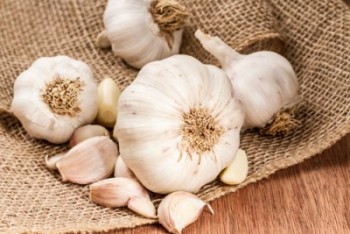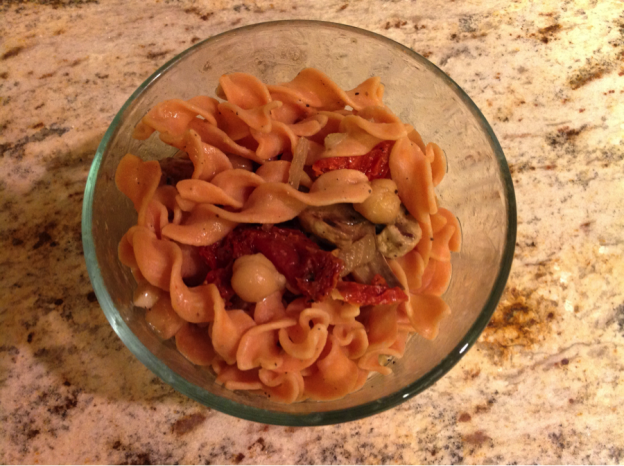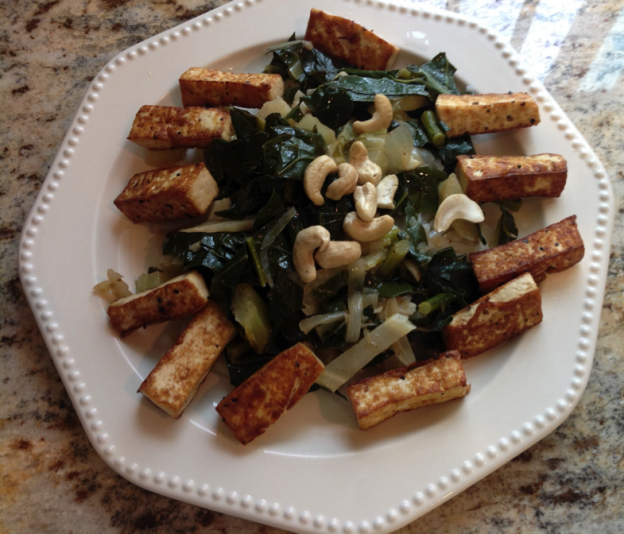Mmm, garlic! I can’t get enough of this tasty, aromatic ingredient and love to incorporate it abundantly in my home recipes. Garlic adds an irresistible depth of flavor to my dishes and it’s an essential part of that comforting aroma we often associate with fresh, home cooking. But, in addition to its sensational culinary properties, garlic is packed with a variety of powerful health benefits that are enormously helpful in keeping us lean by guarding our immune systems against infections, detoxifying the liver, and even lowering blood pressure.
Here are the primary reasons I love garlic, plus a couple of my favorite recipes that include it generously.
*Garlic Boosts Immunity
Garlic is a fierce defender of the immune system with great capacity to prevent and banish colds. Garlic has been called a natural antibiotic because of its high concentration of manganese, calcium, vitamin B1, Vitamin B6, vitamin C, phosphorous, copper, potassium, and selenium. This combination of nutrients unite in garlic like a veritable bacteria-and-virus-fighting army. If you feel yourself starting to sniffle, this is the ingredient to grab for in the grocery store. I also like to supplement my immune defense by taking garlic capsules, a potent alternative to eating it in food, (and startling your partner with the smell of your breath!)
Here’s one of my favorite garlic-y recipes, perfect for staying cold-free, lean, and satisfied, especially in the wintertime!
Beth’s Immunity Soup
What You’ll Need:
4 to 6 cups vegetable or chicken broth
2 teaspoons olive oil
5 cloves crushed garlic
finely minced hot peppers (as many as you like depending on your spiciness preference)
½ teaspoon cumin
¼ cup cilantro
2 ½ cups chopped tomatoes, juices included
juice of one lemon
brown rice (optional)
avocado (optional)
Make it Lean:
-
In a stockpot, bring broth to a slow boil
-
in a skillet, heat olive oil over medium heat. Sauté garilc and hot peppers and a dash of cumin.
-
add the cilantro, tomatoes, adn lemon juice to the broth. lower to a simmer and mixi n the garlic, peppers, and remaining cumin.
Optional:
-
Add brown rice if you would like carbs
-
Garnish with avocado
*Garlic is a great Detoxifier
Garlic triggers the liver to release toxins from the body, allowing you to better digest and metabolize food, and helping to maintain a healthy, lean stomach.
*Garlic Lowers Blood Pressure
Garlic has a natural ability to lower blood pressure, which is very favorable for those of us who navigate fast-paced lives and high stress levels, which can spike blood pressure or increase it over time. According to the Mayo Clinic, garlic releases nitric oxide, naturally dilating blood vessels to decrease blood pressure.
This flavorful salad has superb detoxifying and blood-pressure lowering power of raw garlic, plus the diuretic properties of artichoke and the citrus freshness of lemon.
Lemon Garlic Artichoke Salad
What You’ll Need:
5 tablespoons freshly squeezed lemon juice
¼ cup olive oil
½ teaspoon sea salt
1 teaspoon freshly ground black pepper
¼ cup parsley
3 cloves garlic. diced
12 baby artichokes– frozen or canned, chopped
6 cups mixed greens
Make it Lean:
-
In a blender, blens the lemon juice, olive oil, salt, pepper, parsley, and garlic until smooth and thick (approx. 2 to 3 minutes.)
-
Toss dressing with artichokes and serve over mixed greens
Garlic is an all-around wonderful ingredient with a very versatile set of uses in cooking and so many lean benefits. Keeping your breath mints handy, I recommend consuming garlic in abundance to keep your body’s natural defenses up, to detox your liver, and to help keep your blood pressure in a healthy range. YogaLean loves garlic!



 2. Add diced sundried tomatoes, mushrooms, and broth to pan and
2. Add diced sundried tomatoes, mushrooms, and broth to pan and
 I have used the greens as a side dish on their own and have enjoyed using them in stir-fry dishes also. The great thing about a stir-fry is that it is a way to use of vegetables that you have in the refrigerator. You do not need to have a large portion of any one vegetable to make a successful stir-fry. Each time you make a stir-fry you can use a different sauce as well. It can be an ever-changing recipe. Of course, when you find a combination you like, you may want to make it time and time again!
I have used the greens as a side dish on their own and have enjoyed using them in stir-fry dishes also. The great thing about a stir-fry is that it is a way to use of vegetables that you have in the refrigerator. You do not need to have a large portion of any one vegetable to make a successful stir-fry. Each time you make a stir-fry you can use a different sauce as well. It can be an ever-changing recipe. Of course, when you find a combination you like, you may want to make it time and time again!








